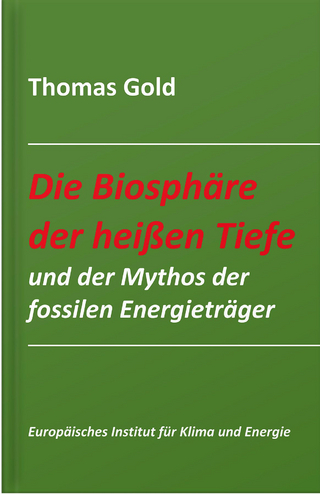Immobilization of Enzymes and Cells
Humana Press Inc. (Verlag)
978-1-58829-290-2 (ISBN)
Enzymes and whole cells are able to catalyze the most complex chemical processes under the most benign experimental and environmental conditions. In this way, enzymes and cells could be excellent catalysts for a much more sustainable chemical industry. However, enzymes and cells also have some limitations for nonbiological applications: fine chemistry, food chemistry, analysis, therapeutics, and so on. Enzymes and cells may be unstable, difficult to handle under nonconventional conditions, poorly selective toward synthetic substrates, and so forth. From this point of view, the transformation—from the laboratory to industry—of chemical processes catalyzed by enzymes and cells may be one of the most complex and exciting goals in biotechnology. For many industrial applications, enzymes and cells have to be immobilized, via very simple and cost-effective protocols, in order to be re-used over very long periods of time. From this point of view, immobilization, simplicity, and stabilization have to be strongly related concepts. Over the last 30 years, a number of protocols for the immobilization of cells and enzymes have been reported in scientific literature. However, only very few protocols are simple and useful enough to greatly improve the functional properties of enzymes and cells, activity, stability, selectivity, and related properties.
Immobilization of Enzymes as the 21st Century Begins.- Immobilization of Enzymes.- Cross-Linked Enzyme Aggregates.- Immobilization-Stabilization of Enzymes by Multipoint Covalent Attachment on Supports Activated With Epoxy Groups.- Glutaraldehyde in Protein Immobilization.- Practical Protocols for Lipase Immobilization Via Sol-Gel Techniques.- Encapsulation of Enzymes Using Polymers and Sol-Gel Techniques.- Design of Smart Biocatalysts.- Affinity Immobilization of Tagged Enzymes.- Bioaffinity Immobilization.- One-Step Purification, Immobilization, and Stabilization of Poly-Histidine-Tagged Enzymes Using Metal Chelate-Epoxy Supports.- Stabilization of Multimeric Enzymes Via Immobilization and Further Cross-Linking With Aldehyde-Dextran.- Purification, Immobilization, Hyperactivation, and Stabilization of Lipases by Selective Adsorption on Hydrophobic Supports.- Immobilization and Stabilization of Proteins by Multipoint Covalent Attachment on Novel Amino-Epoxy-Sepabeads®.- Improved Stabilization of Chemically Aminated Enzymes Via Multipoint Covalent Attachment on Glyoxyl Supports.- Stabilization of New Imprint Property of Glucose Oxidase in Pure Aqueous Medium by Cross-Linked-Imprinting Approach.- Reversible Covalent Immobilization of Enzymes Via Their Thiol Groups.- Very Strong But Reversible Immobilization of Enzymes on Supports Coated With Ionic Polymers.- Immobilization of Enzymes on Magnetic Particles.- Immobilization of Proteins on Gold Surfaces.- Immobilization of Enzymes on Electrodes.- Immobilization of Enzymes for Use in Organic Media.- Immobilization of Enzymes for Use in Ionic Liquids.- Immobilization of Enzymes for Use in Supercritical Fluids.- Immobilized Enzymes for Biomedical Applications.- Characterization of Immobilized Enzymes by Microcalorimetry.- Useof Immobilized Biocatalysts in Fluidized Bed Format.- Taylor-Couette Vortex Flow in Enzymatic Reactors.- A Novel Immobilization Method for Entrapment: LentiKats®.- Encapsulation of Cells in Alginate Gels.- Immobilization of Cells on Polyurethane Foam.- Immobilization of Cells With Transition Metal.- Immobilization of Microalgae.- Bioluminescence in Immobilized Cells for Biomass Detection and Biosensor Applications.- A Proteomic Approach to Biofilm Cell Physiology.- Encapsulation of Bacteria for Biodegradation of Gasoline Hydrocarbons.- Biomedical Applications of Immobilized Cells.
| Erscheint lt. Verlag | 15.3.2006 |
|---|---|
| Reihe/Serie | Methods in Biotechnology ; 22 |
| Zusatzinfo | 217 Illustrations, black and white; XIV, 450 p. 217 illus. |
| Verlagsort | Totowa, NJ |
| Sprache | englisch |
| Maße | 155 x 235 mm |
| Themenwelt | Naturwissenschaften ► Biologie ► Biochemie |
| Naturwissenschaften ► Biologie ► Genetik / Molekularbiologie | |
| Naturwissenschaften ► Biologie ► Zellbiologie | |
| Technik ► Umwelttechnik / Biotechnologie | |
| ISBN-10 | 1-58829-290-8 / 1588292908 |
| ISBN-13 | 978-1-58829-290-2 / 9781588292902 |
| Zustand | Neuware |
| Informationen gemäß Produktsicherheitsverordnung (GPSR) | |
| Haben Sie eine Frage zum Produkt? |
aus dem Bereich




